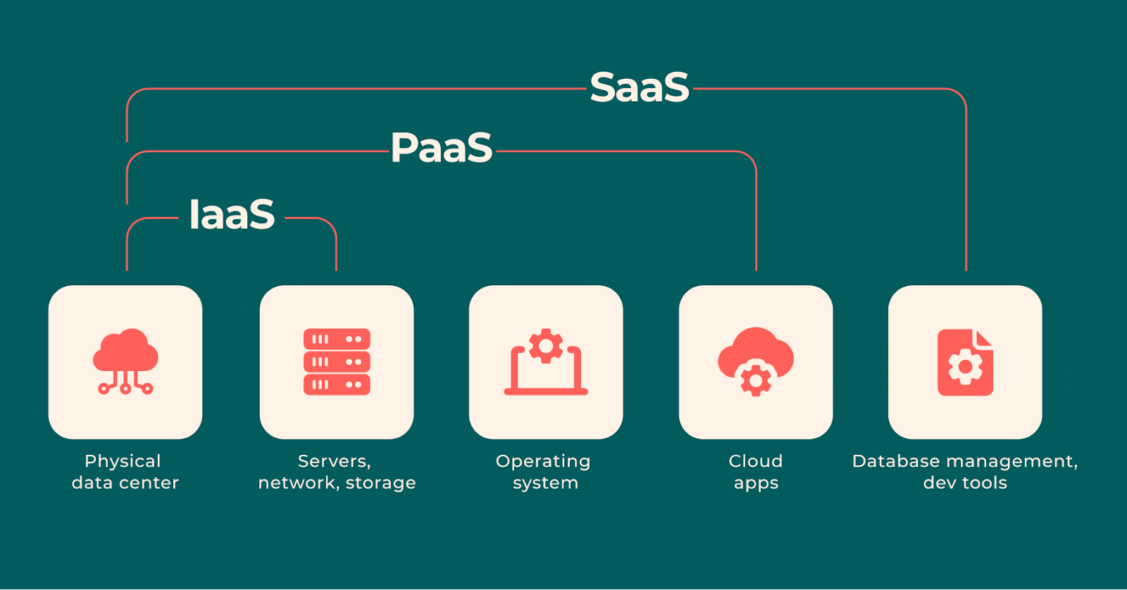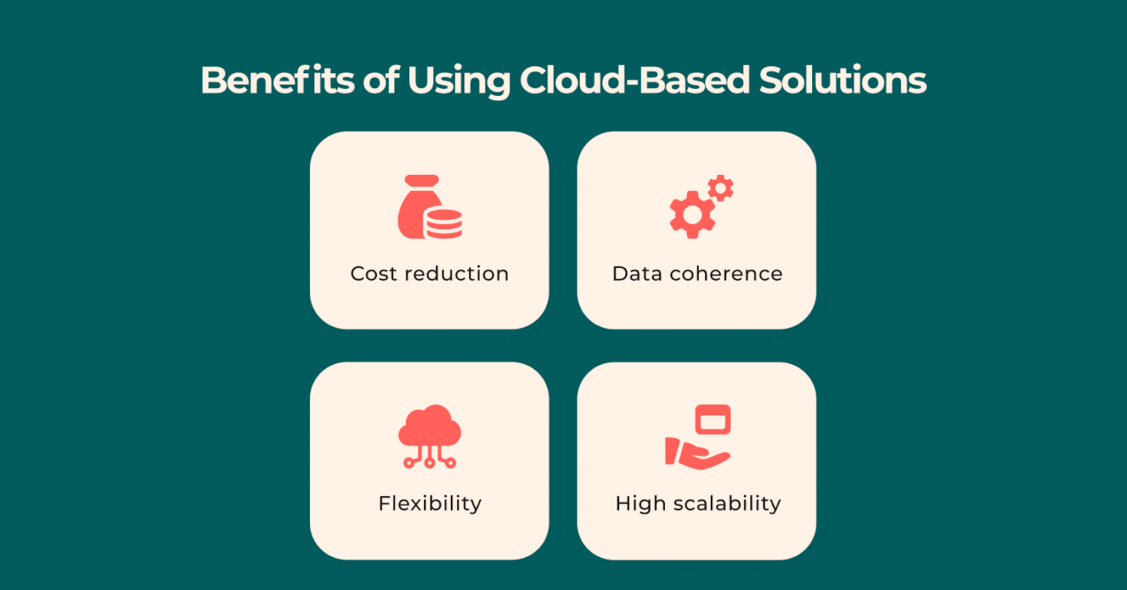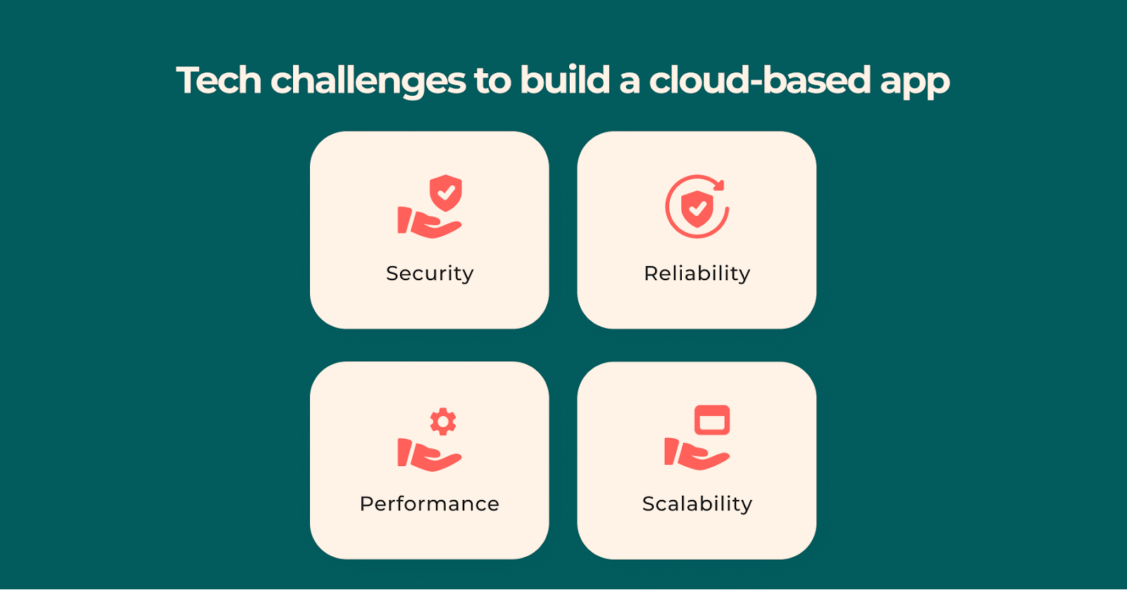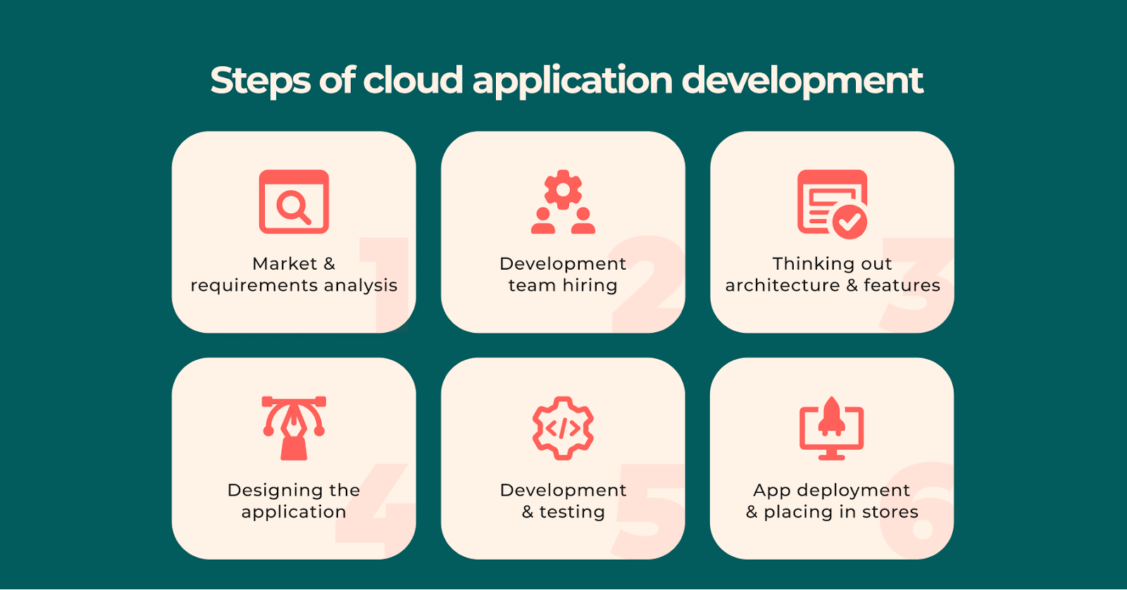Cloud-based software offers numerous benefits to businesses, enabling them to expand their horizons, optimize operations, and conserve valuable resources. Consequently, many enterprises embrace cloud solutions to propel their growth and enhance overall efficiency.
This article will help you comprehend the advantages and challenges associated with cloud application development. Additionally, you will learn the core aspects of creating a cloud-oriented solution and outline the necessary steps involved in the process.
Cloud Development Future
Cloud-based app development is a swiftly expanding sphere. The stats prove it: according to Statista’s predictions, the worldwide cloud app market will reach $166.83 billion by 2024.
Leftronic states that cloud-based solutions are widely used these days. So, 60% of the world’s companies store their private data in clouds. A part of an app (or the entire cloud-based solution) is transferred by 77% of businesses to cloud platforms.
Statista’s data reveals that by 2023, industries like insurance, telecommunications, retail, and banking will emerge as the leading adopters of cloud services. This forecast is hardly surprising as these sectors heavily rely on secure data storage and processing, making cloud usage an essential requirement.
What is a Cloud-Based Application?
Let’s dig deeper into the details of cloud-based development to discover why it’s so popular.
Cloud computing refers to dispersing diverse services and assets (such as data storage, databases, servers, etc.) from an IT framework supplied and overseen by a third party. This arrangement enables enterprises to access and utilize these resources without the need to maintain their infrastructure. You can deploy an app on the following three cloud types (which are the most common ones):
- A public cloud is accessible online through each device, offering the best costs for data storage and processing power flexibility;
- A private cloud acts as a closed online system, giving a secure space for storing data accessible to a limited number of users;
- A hybrid cloud consists of a combination of public and private ones. That provides IT businesses with additional opportunities to store data and deploy applications.
Cloud-native applications are innovative software solutions that effectively divide the processing logic and data storage responsibilities between a client-side, which serves as the user’s interactive interface, and a server side, essential for data processing. The entirety of the information is securely stored within the cloud infrastructure, while the option remains to store data on the user’s device for offline access, ensuring uninterrupted productivity.
There are three well-known cloud app types: SaaS, PaaS, and IaaS.

Software as a Service (SaaS)
Many global companies (such as Google, Zendesk, AWS, and Salesforce) are keenly interested in SaaS application development. This fascination stems from the fact that SaaS enables the creation of mobile and web solutions that can be utilized seamlessly across various devices without needing individual installations and customizations.
You can use SaaS for many various purposes, including:
- Document management, file sharing, and collaboration;
- Offering email tools, auditing capabilities, etc;
- Sharing calendars to plan events for the entire company.
Infrastructure as a Service (IaaS)
Your entire infrastructure, encompassing visualization, networks, storage, and services, is under the capable management of an IaaS service provider, either through a public or private cloud platform. Furthermore, IaaS enterprises extend the array of services, including resilient instruments like recovery and backup replication, comprehensive invoicing solutions, advanced monitoring capabilities, and cutting-edge security tools like PCI-DSS compliance and state-of-the-art information encryption standards.
Platform as a Service (PaaS)
Creating a PaaS (Platform-as-a-Service) offering involves the cloud provider offering a comprehensive package of software and hardware resources for rental. This all-inclusive solution enables efficient development and deployment of applications, encompassing a diverse range of components:
- Middleware;
- Database management infrastructure;
- Development tools;
- Operating systems.
Heroku and OpenShift are examples of PaaS cloud products.
Cloud-Based Solutions Benefits
Cloud computing offers businesses a range of indisputable benefits that will help them successfully achieve their goals. We’ll observe the essential ones.

Cost reduction. Global businesses are intensely preoccupied with the prudent allocation of funds. To address this concern, numerous vendors are prepared to offer solutions, enabling efficient resource conservation for the launch of cloud-based products. Most cloud services adopt a pay-as-you-go model, ensuring payment is solely based on usage. This approach eliminates unnecessary expenses related to excess cloud storage or functionalities.
Flexibility. Cloud solutions offer businesses enhanced flexibility compared to hosting on a traditional local server. Should your business require extra bandwidth, a cloud-oriented service could swiftly deliver it without requiring intricate and costly IT infrastructure upgrades. This newfound autonomy and versatility can profoundly influence your company’s overall capacity.
High scalability. Creating cloud-native applications offers the essential scalability you require promptly, empowering your enterprise to adjust to evolving business circumstances and requirements swiftly. Additionally, this approach enables efficient management of an increased customer base, leading to elevated profitability for your company.
Data coherence. Adopting cloud services can completely shield your organization from problems such as irregular reporting or subpar data quality. With cloud-based technologies, business owners can centralize all their data in a designated location and format. This approach guarantees that every update or alteration is instantly accessible to all users within the cloud environment, effectively mitigating the risk of human errors and upholding data consistency at all times.
Cloud-Based App Development: Technical Obstacles
Creating cloud solutions presents a multitude of technical challenges. Therefore, to effectively streamline the process of developing cloud applications, it is essential to gain comprehensive insights into its various traps and pitfalls.

Security. Cloud-based systems handle substantial amounts of sensitive personal data, necessitating stringent security measures. Prioritizing this aspect, individuals can implement diverse encryption protocols (such as Data Encryption Standard (DES) or Advanced Encryption Standard (AES), etc.), robust SSL protocols, and various other safeguards to fortify the protection of their data.
Reliability. To ensure the impeccable functionality of your application, it is imperative to opt for a dependable cloud framework while thoroughly assessing the security measures of your chosen cloud provider. Many businesses favor AWS services as they are renowned for their unparalleled reliability and trustworthiness.
Scalability. To fully leverage this advantage, it is essential to plan its integration carefully, ensuring your application is ready to handle the increased data influx. This ambitious goal can be accomplished by adopting a hybrid cloud framework that allows seamless scalability based on fluctuating requirements.
Performance. Ensuring an optimal user experience is paramount: customers highly value swift-loading solutions. That’s why global suppliers strategically configure their servers to deliver an excellent page loading speed, irrespective of the users’ geographical location. As an integral part of cloud application infrastructure, content delivery networks (CDNs) are prevalent in accelerating data distribution.
Cloud App Development: Steps To Follow
The cloud app development process may include the following steps:

Market & requirements analysis. Initially, to grasp the most optimal cloud deployment alternative for your enterprise, commence a comprehensive examination of market prerequisites. Determine the applications well-suited for migration to cloud infrastructures while aligning them with your corporate objectives and current assets. Additionally, emphasize conducting thorough market research to gain profound insights into your clientele, delineate their challenges, and ascertain your product’s potential benefits. Embracing this approach is indispensable for achieving triumphant outcomes in the marketplace.
Development team hiring. To create a cutting-edge cloud solution tailored to your company’s requirements, you can engage freelancers, establish an internal team, or collaborate with a reliable software service provider. Remember that the cloud application architecture must be intentionally crafted and meticulously integrated into your existing business systems when hiring. For this reason, it is highly advisable to partner with a proficient IT vendor who can ensure a seamless implementation.
Thinking out architecture & features. To enhance the effectiveness of your application and streamline the development process, it is essential to prioritize architecture, service model, and cloud migration. These elements play a pivotal role in maximizing your app’s performance. Seeking guidance from a reliable software vendor becomes paramount. This approach allows you to acquire a tailored product that aligns perfectly with your business requirements. Expert specialists will assess the most suitable tech stack for your app’s development, creating a comprehensive project specification that awaits your approval.
Designing the application. This step implies the preparation of an app interface that would be user-friendly and easy to navigate by the UI/UX designers. The customers can monitor the practices and changes, comment, or suggest improvements. After that, the designers prepare the estimates for the work done.
Developing & testing. The team of developers is all set to embark on crafting a top-notch product tailored to meet your specific business needs. The development process will be structured into sprints, each lasting 10 working days, following the well-established Agile/Scrum methodologies. Before the official release, comprehensive testing will be conducted to ensure the seamless functionality of the end product.
App deployment & placing in stores. A final step is to deploy or publish an application on one of the marketplaces (App Store for iOS apps, Google Play for Android). Before publishing, you should check if your product meets the marketplace guidelines. Then, you can fill in the required information, send the app for review, and wait for approval or declination.
Wrapping Things Up
Using cloud apps, you can achieve your business goals swiftly and efficiently. However, keep in mind that the development process of cloud-based products is quite tricky. An experienced software development team will help you avoid all the hidden pitfalls. The specialists will consult you about all the latest tech innovations and assist you in building a modern and flexible solution that would be competitive on the market.


Average Rating